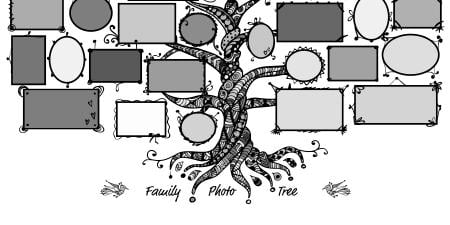Family medicine training is still largely based on a model developed more than 35 years ago, with 3 years of required rotations in multiple areas of medicine, combined with a longitudinal clinic experience in model family practice centers.1,2 The physician trained in this model has been prepared to practice in a range of settings and with diverse scopes of practice. The outcome is a physician workforce that is distributed across urban and rural America with important positive effects for the health of communities.3,4 The durability and beneficial outcomes of this training model suggest that it should continue, but there are several reasons to consider innovative changes in its character if not its duration:
- The aging of the US population and increasing prevalence of chronic disease,
- Reduction in resident work hours leading to a reduction in training time,
- Migration of new diagnostic and treatment technologies into outpatient care, and
- Need for a new relationship with patients that delivers traditional benefits but in updated and recognizable ways.
Though some have argued for a shorter residency program for family medicine, we believe that a longer and more refined (4-year) training program may be a better option to meet the changing needs of the US health care system. For starters, the cresting wave of baby boomers is producing a shift in the US age demographics that will continue for decades, and the majority of this group will suffer from 1 or more chronic diseases. Family physicians, particularly those with added training in geriatrics, care for a large share of the current elderly population, but more capacity will be needed. The restricted 80-hour work week for residents, while beneficial in a number of ways, reduces time for clinical and didactic education. Graduates from family medicine programs are providing a narrower spectrum of care than they did just 5-7 years ago, but it is unclear whether this is due to changes in training, lifestyle choices, or forced scope reduction.5,6
"Entire fields of study [such as genetics, HIV, and sports medicine] have been created," since the specialty of family medicine was founded in the early 1970s.4 As technology in a variety of fields becomes cheaper and more refined, it migrates to outpatient settings, so that care previously delivered in hospitals and by subspecialists becomes available in primary care. Finally and most importantly, Americans identify the characteristics of family medicine as valuable and desirable but fail to identify family physicians as the source of such care.7
Family medicine has accepted these challenges as an opportunity to develop a new model of care that patients can identify as a source of sustained, healing relationships. The new model is based on the concept of a personal medical home, where patients will receive acute, chronic, and preventive care services that are accessible, comprehensive, integrated, patient-centered, safe, scientifically valid, and satisfying to both patients and their physicians. Residency training must be where the next generation of family physicians adopts this new model of medical care.
In a recent study of residency directors, practicing family physicians, and family medicine residents, many supported the current 3-year training model because it allows sufficient time for a basic foundation and adequate exposure to inpatient and outpatient medicine.1 Many respondents, however, said they would favor a change to a 4-year program if there were a genuine increase in the depth and breadth of training. As one resident commented, there is "so much to learn, so little time."1 In a Graham Center study of graduating residents' views on a fourth year of residency training, respondents nominated training experiences that could fill 7 additional months—and only recommended 5 weeks of reductions from current training. To the extent that the respondents were expressing discomfort with their preparation for a fuller scope of practice, the results support the option of a fourth year of training.2 A small proportion of family physicians pursue additional certifications or fellowship training, and others supplement their skills with CME; however these opportunities do not appear to sufficiently meet the expressed needs of the survey participants. The openness to additional training time in exchange for a commitment to enhanced training may be a real opportunity to meet the challenges we have outlined.
The current 3-year model has effectively and efficiently prepared nearly 70 000 family physicians whose care is associated with beneficial outcomes. With the new challenges we face and the specialty's commitment to a new model of care, it is time to consider transforming the manner and length of time in which we train family physicians. It is highly doubtful that a reduction in training time is an option if family medicine is to grow as a specialty and respond to the desire of many Americans for a new relationship with the health care system. Reducing the training time of family physicians would be a retreat from current trends and opportunities. What is needed is a period of purposeful innovation, with desired training outcomes geared to a new model of delivering care.8 We believe that medical students and patients will respond to this direction and that trainees will accept the change whether or not it involves an additional year of training.
References
- Duane M, Green LA, Dovey S, Lai S, Graham R, Fryer GE. Length and content of family practice residency training. J Am Board Fam Pract. 2002;15(3):201-208.
- Duane M, Dovey S, Klein L, Green LA. Follow-up on family practice residents' perspectives on length and content of training. J Am Board Fam Pract. 2004;17(5):377-383.
-
Fryer G, Green L, Dovey S, Phillips R Jr. The United States relies on family physicians unlike any other specialty. Am Fam Physician.2001;63(9):1669.
- Shi L. Primary care, specialty care, and life chances. Int J Health Serv. 1994;24(3):431-458.
-
Fields K. More on the 4-year FM residency program. Fam Med.2005;37(1):8
-
Ringdahl E, Delzell J. A Residency Program Graduate Survey: Interesting Trends in Scope of Practice. 38th STFM Annual Spring Conference, Society of Teachers of Family Medicine; May 3, 2005; New Orleans, La.
-
Martin JC, Avant RF, Bowman MA, et al, and the Future of Family Medicine Project Leadership Committee. The Future of Family Medicine: a collaborative project of the Family Medicine Community. Ann Fam Med. 2004;2(suppl 1):S3-S32.
-
Bucholtz JR, Matheny SC, Pugno PA, Allen D, Bliss EB, Korin E. Task Force Report 2. Report of the Task Force on Medical Education. Ann Fam Med. 2004;2:S51-S64. Available online only at: http://annalsfm.highwire.org/cgi/reprint/2/suppl_1/s51. Accessed May 23, 2005.



